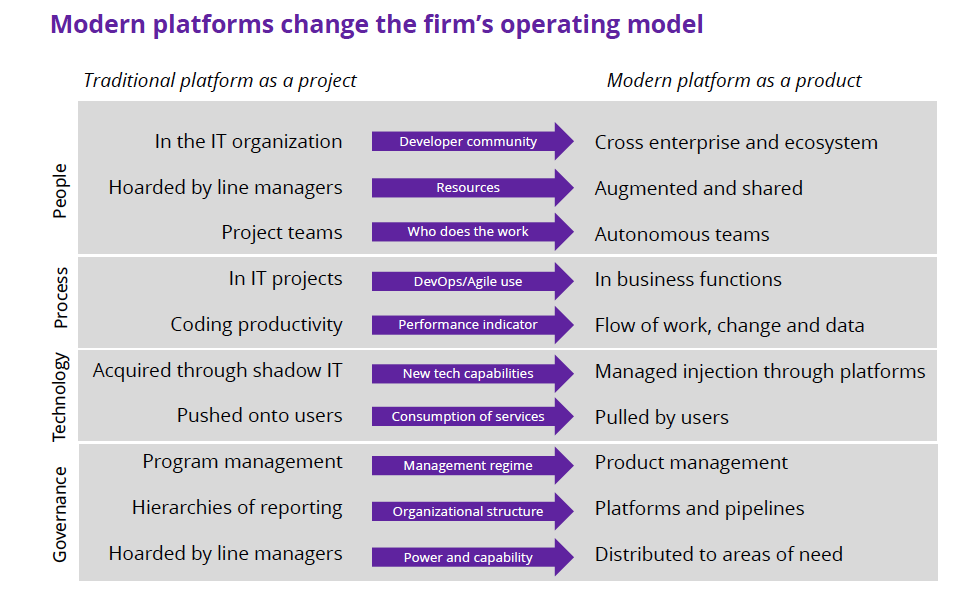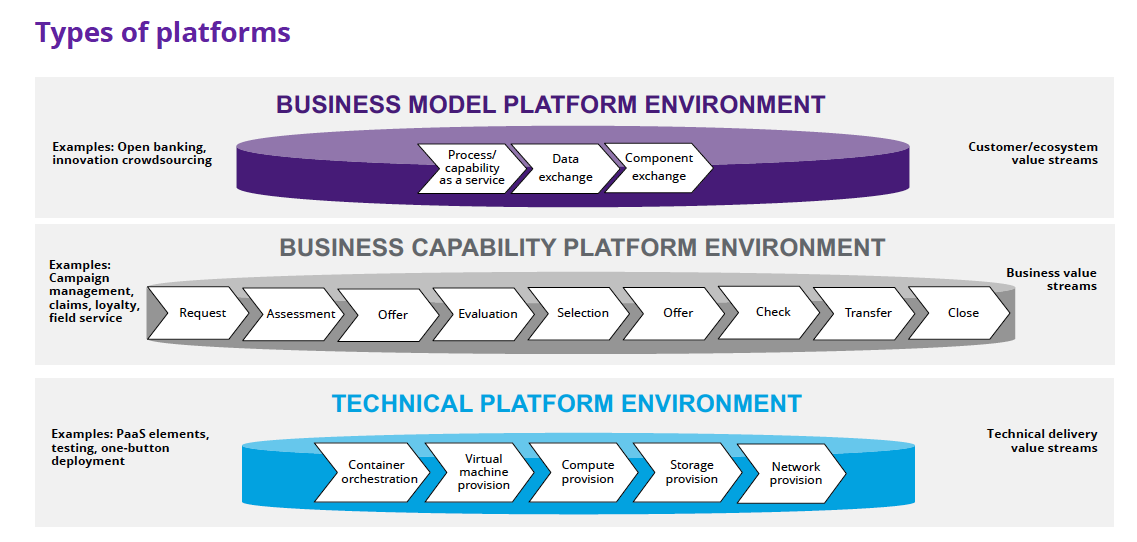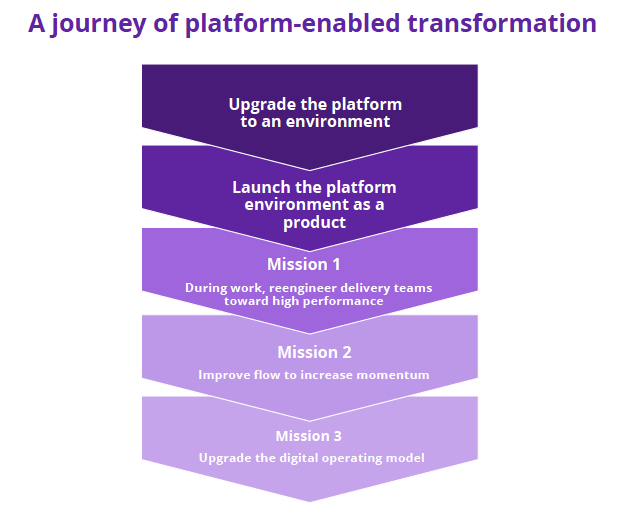A paper by DXC Leading Edge
Executive Summary
A software-defined world is mobilizing rapidly as we exit the pandemic, and digital platforms have a new and powerful part to play — as change agents. An earlier paper from DXC Leading Edge, Mastering platform-driven business, part of our Accelerated Now research agenda, discussed how organizations are redesigning for flow using pipelines that work seamlessly with platforms to rapidly deliver services. Reimagined and redefined as dynamic digital environments consisting of people, processes and technologies, modern platforms are conduits for high-velocity innovation and flow — of work, data and change — in the new world.
Platforms as change agents
Competing in the software-defined world means speeding up the rate at which value is delivered to customers. In turn it calls for a redistribution of power and capability away from traditional silos to areas of the organization that manage the lifecycle of digital products — at speed.
Treating platforms as change agents that modify behavior and make employees digitally fluent is a shortcut to achieving flow of work, data and change that’s fast and distributed. Extending platforms to become collections of people, processes and technologies is vital but the key is to invite consumption rather than impose use — a pull versus a push engagement approach used in product management.
For example, an approach for delivering modern insurance products to the market is to attract and grow a community of developers and suppliers through socialization of a holistic set of capabilities (technology, processes, patterns and people) that enable the delivery of innovative new products and services. Developers and suppliers plumb into the services offered as long as they follow the rules and share API definitions in a central repository; in a regulated industry, open cannot mean Wild West.
A pivotal factor is to treat platforms as products: switch from project thinking, which attracts investment as a lump sum, to product thinking, which justifies ongoing investment by managing a value-oriented pipeline. This is how platforms evolve into change agents.
When modern platform environments are managed as a product, they change the operating model of the enterprise (Figure 1).

Figure 1. When modern platform environments are managed as a product, not a project, and have executive support, they change the operating model of the enterprise.
In fact, platform-led transformation isn’t about technical components; it's a question of how to organize flow in order to create engagement and value. Platform-led transformation extends modernization of the technology estate beyond an upgrade to cloud to an entire rethink of how work, data and change flow through the organization and ecosystems beyond.
Platform benefits
Given the challenge of transforming to a platform-centric organization, it’s important to lay out the benefits:
- Liberate your organization. Free up teams to be more innovative and dynamic where it matters.
- Better sensing. Increase your ability to sense change in your environment (e.g., business practices, IT estate, customer sentiment).
- Power organizational change. Empower teams to invent new ways of operating and new value propositions, facilitating change from the inside out.
- Debt containment. Use platform-led transformation as a vehicle to flatten and reduce technical debt.
- Ecosystem participation. A re-architected and open technology estate is essential for participation in horizontal markets or modern business ecosystems.
- Productivity increase. Consumption and reuse increase while build, rework and reinvention decrease; scarce resources (e.g., platform engineers) are used to evolve centralized, automated, optimized, easy-to-use platform services and infrastructure that are shared.
Platform types
Through our research we have identified three platform types or environments (Figure 2):
- Technical platform — Enables provision and management of the necessary resources to run production, test and development workloads, with tailoring of resources as required.
- Business capability platform — A set of modular services that can be consumed directly or exposed via APIs that allow teams to build and deliver new or upgraded business services.
- Business model platform — Environments such as open banking and innovation crowdsourcing that connect external producers and consumers to generate learning and revenue for the platform owner
 Figure 2. There are 3 types of platforms: technical platform, business capability platform and business model platform.
Figure 2. There are 3 types of platforms: technical platform, business capability platform and business model platform.
Platform thinking
Platform thinking is an evolution (Figure 3). Accessing the right vocabulary and tools, and acquiring a product management mindset, underpin the journey.

Figure 3. Platform thinking is a journey that enables business transformation.
Designing platforms as operating models replaces legacy processes with modern, intelligent, automated and digitized versions that learn and evolve as fast as the pace of new technology. This enables the following:
- Exchange and integrate. The platform exposes capability sets (services) that allow others to leverage what has been prebuilt, then reassemble and deploy to satisfy a specific need, and then reshare.
- Industrialize. The platform team senses emergent capabilities and hardens them, ready for scaling.
- Accelerate development. The intent to decentralize, creating a “pull” on the platform, empowers teams to essentially procure and provision new capabilities where they are needed most.
- Act as change agents. Teams develop new ways to operate using the platform(s), creating a self-perpetuating engine of invention and re-invention.
DXC sees these capabilities as a modern digital platform environment. We use this environment to create high performance teams, faster software engineering pipelines and leaner, faster, more efficient systems and processes. These modern digital platform environments are both engineering the new enterprise operating model and powering the new IT operating model.
Modern digital platform environments are both engineering the new enterprise operating model and powering the new IT operating model.
Platforms for performance
In a software-defined world that’s becoming more intelligent and moving faster, it is critical for data, work and value to flow faster around organizations. Platforms designed as change agents reengineer the operating model of organizations, enabling teams to work more productively and creatively as the platforms draw in more consumers and suppliers. Enterprises that embrace platform thinking will have the freedom to play in broader ecosystems and capitalize on a software-defined world, accruing significant benefits for the business.




